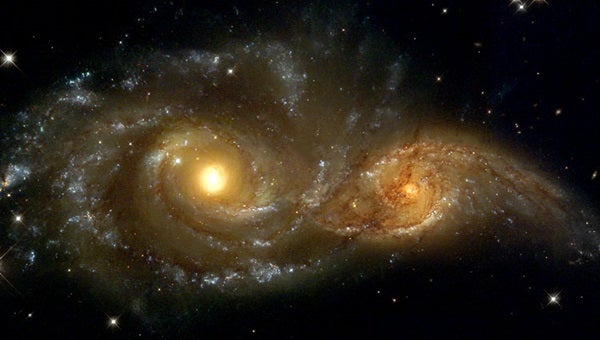In contrast, a spiral galaxy starts as a massive, spinning gas cloud. As the gas atoms emit light and cool, the cloud contracts until its spin halts the collapse and forms a thin disk. Eventually, gas clumps within the disk begin to form stars. The new stars lie within the same thin disk in which the gas resided.
The collision of two gas-rich spiral galaxies triggers star formation, which consumes most of the gas quickly. By the time the merger is complete, the merged galaxy lacks sufficient gas to develop into a new spiral. Most of the remaining gas is hot and puffed-up.
Unlike the dense, cool gas clouds that form spiral galaxies, the hot gas in elliptical galaxies can never cool enough to re-assemble into a massive galactic disk. Also, the stars in the new elliptical never collide. The elliptical shape of their mixed-up orbits stays the same for the entire age of the universe. — Abraham Loeb, Harvard University, Cambridge, Massachusetts










